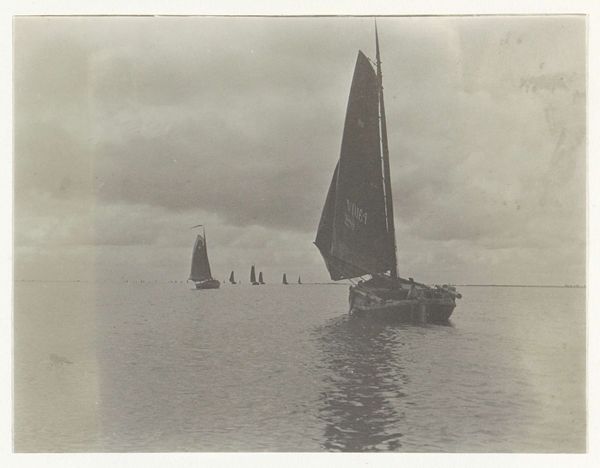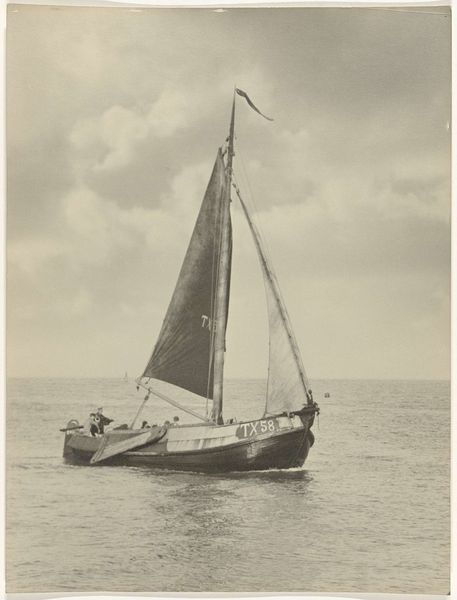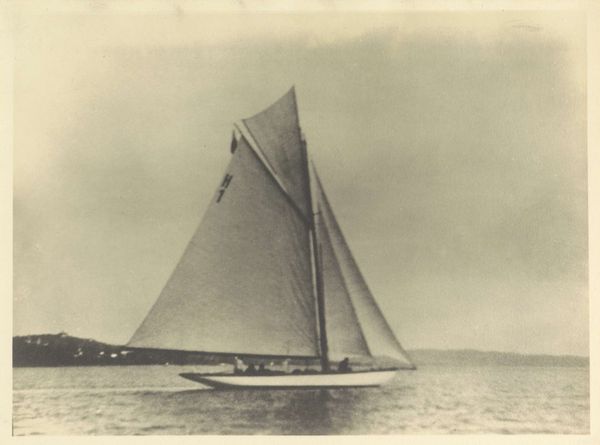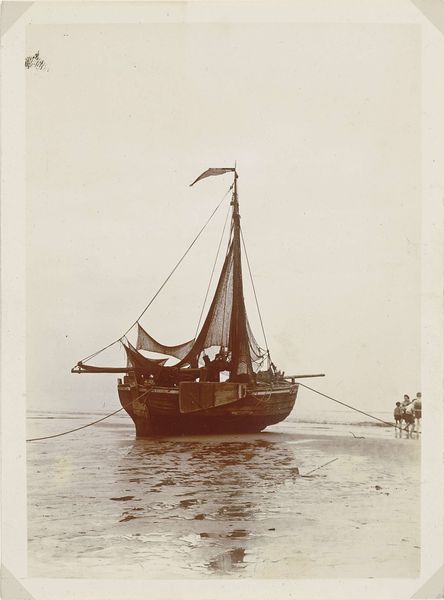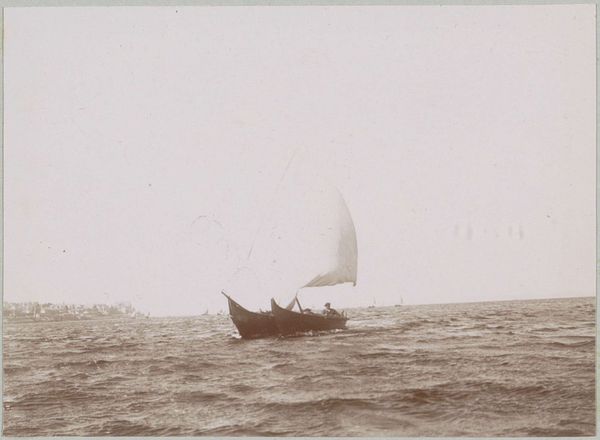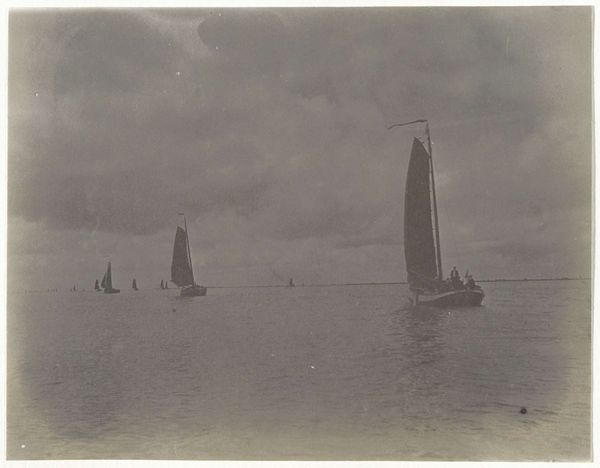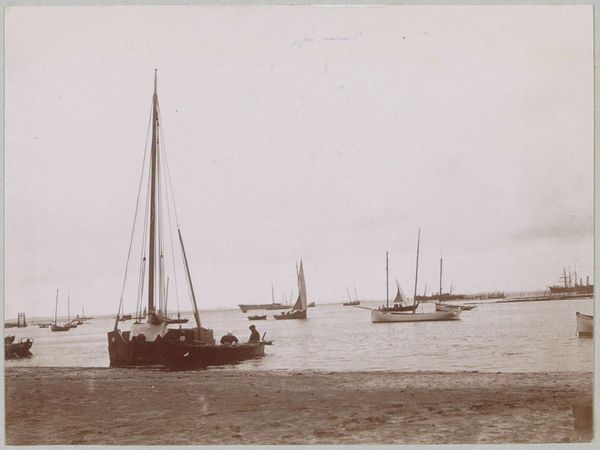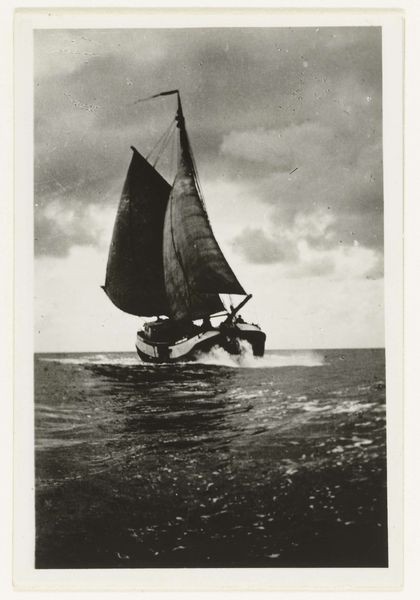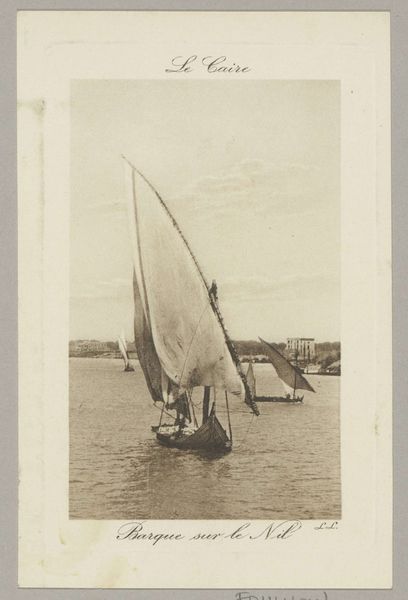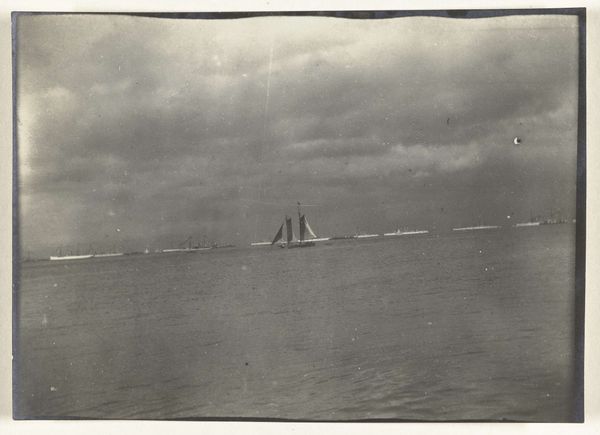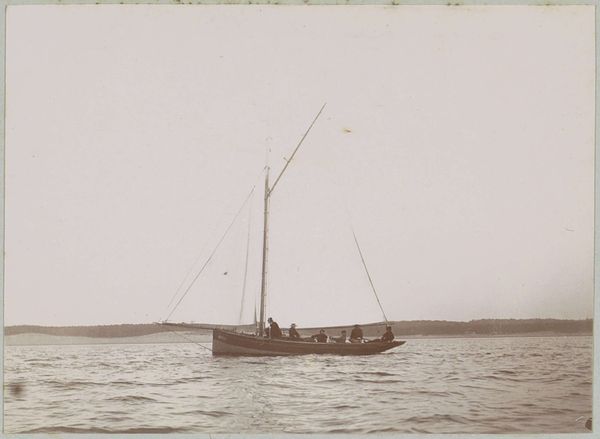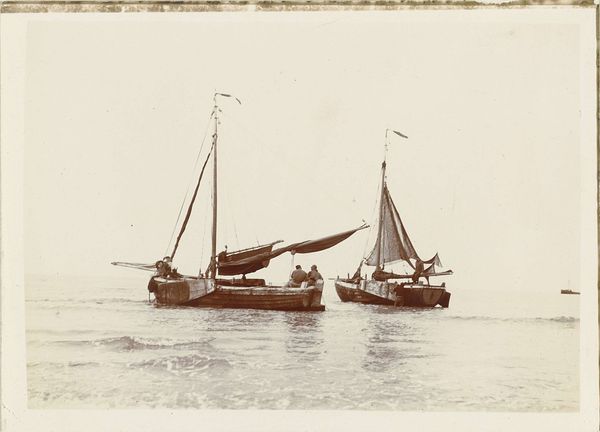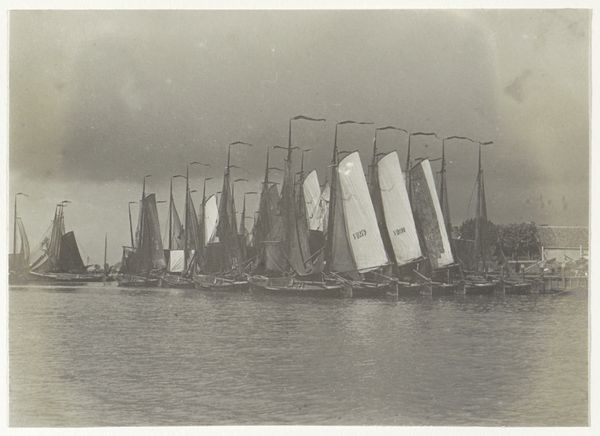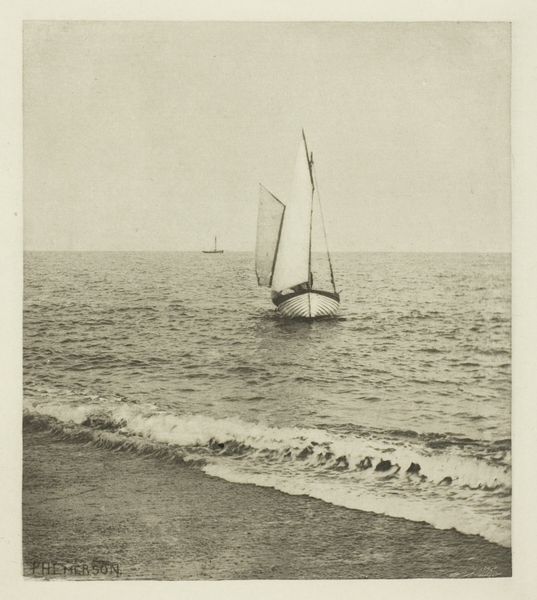
photography, gelatin-silver-print
#
dutch-golden-age
#
landscape
#
outdoor photograph
#
outdoor photo
#
outdoor photography
#
photography
#
gelatin-silver-print
#
monochrome photography
#
realism
#
sea
#
monochrome
Dimensions: height 98 mm, width 73 mm
Copyright: Rijks Museum: Open Domain
Editor: We're looking at a gelatin-silver print, "Volendams vissersschip op de Zuiderzee," dating from around 1900 to 1910, by G. Hidderley. It's a striking image, and the monochromatic palette gives it such a solemn, almost haunting, feel. What do you see in this piece that might escape my notice? Curator: Beyond the immediate aesthetic impression, I see a document reflecting the socio-economic realities of the time. Consider the lives of these fishermen: their dependence on the Zuiderzee, which later became part of the Netherlands. This work speaks to a fraught relationship with nature, labor, and class, as they faced political struggles relating to the closure of the Zuiderzee. Editor: So, the construction of the Afsluitdijk had real impacts here? Curator: Precisely. That historical moment fundamentally altered their way of life, rendering this image both a historical record and a poignant symbol of a lost way of life. Do you notice how the photograph itself might reinforce certain ideas about the working class? Editor: I see what you mean. The dark tones and rough texture almost romanticize their struggle, fitting into a larger narrative about the nobility of labor. It's not just a picture of a boat; it's about the people connected to it. Curator: Exactly. It invites questions about who has the power to represent these communities and how that representation shapes our understanding of their history. What if it were created by one of the fisherman, for instance? Editor: I never thought about it that way. Seeing it as more than just a pretty landscape changes everything. Curator: Indeed. Engaging with the historical context, considering class, and exploring modes of representation truly enriches the meaning of art. Editor: Thank you. Now, when I look at it, it brings out so much more than just the surface image, more meaning.
Comments
No comments
Be the first to comment and join the conversation on the ultimate creative platform.
